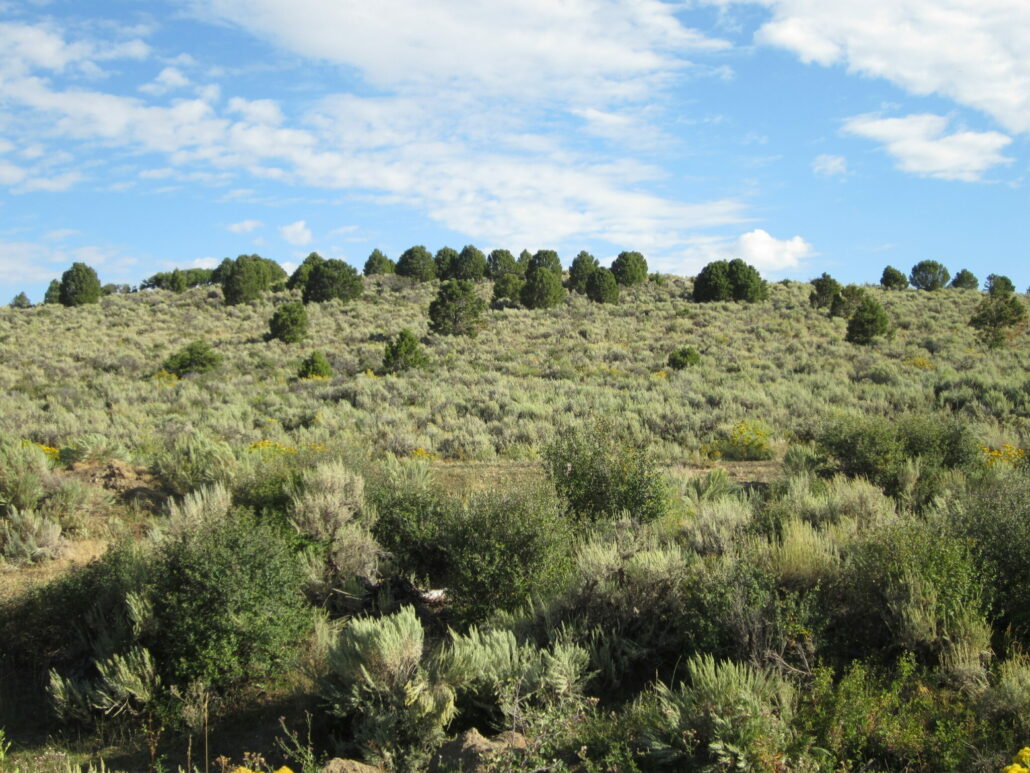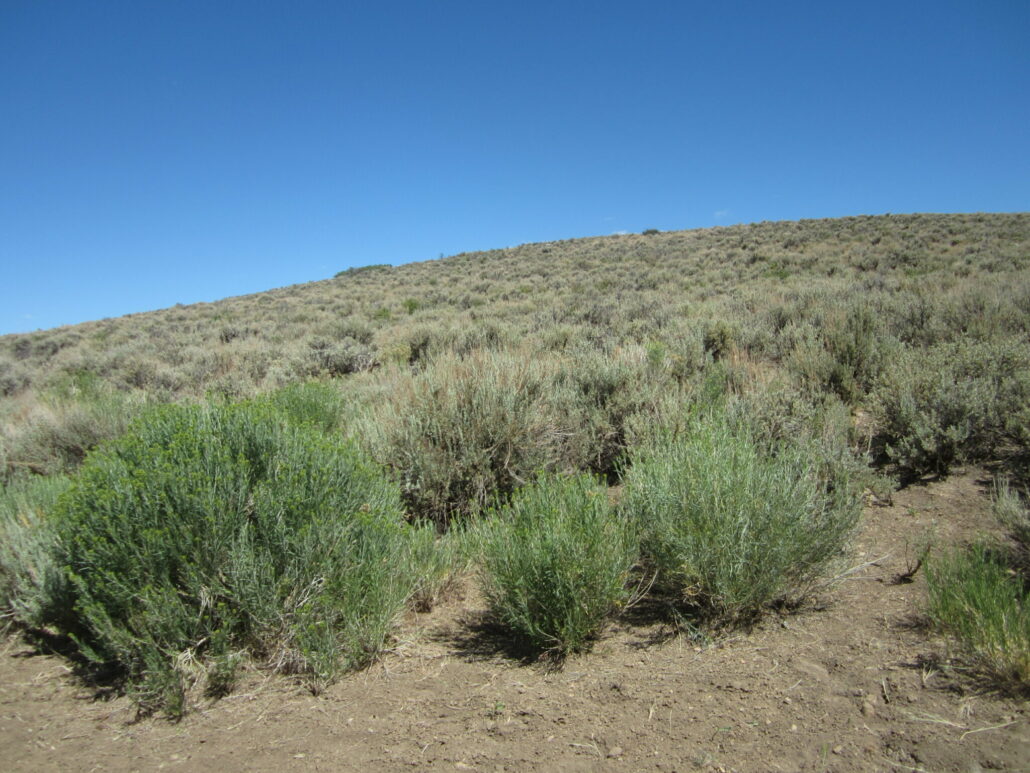Drought: A Constant Challenge on Colorado’s Western Slope
On the Western Slope of Colorado, 2018 was an exceptional drought year, 2019 a welcome reprieve, 2020 severe drought, and 2021 exceptional drought once again. 2022? We don’t know yet, but some climate scientists are predicting another drought (Mosbergen 2018, Prentzel 2021). Ongoing drought has major impacts on wildfire risk, agriculture, recreation, home water use, and food prices. For example, annual production of livestock forage was estimated to be only about 15-25% of average in some Western Slope counties in 2018, with major impacts on livestock operations across the area. Extremely dry and windy conditions are partly responsible for the three largest wildfires in Colorado history, which all in occurred 2020 (Burke 2020). April 2021 was the driest year on record for the Western Slope of Colorado, continuing the trend and fueling concerns over wildfire and water availability (US Drought Monitor 2021). Drought forecasting is important for landowners to plan ahead for their livestock or farming operations, but the impact on wildlife habitat is frequently left out of the discussion.
In temperate climates and particularly the arid Western US, water is a limited resource (Donnelly et al. 2016) and may be present on only 1-2% of the landscape surface. These small areas are important for wildlife, but also provide higher production of forage resources for cattle, and are therefore economically important for ranchers as well. Unfortunately these areas are often degraded by management actions or historic/current infrastructure that result in a low water table and reduced value to livestock and wildlife. Erosion is a common issue in wet meadows that can drop the water table, dry out the surface, and reduce the productivity of the landscape (Figure 1). Careful management and thoughtful restoration are necessary to maintain the water and associated forage resources in even the driest of years. Building systems that are resilient, even during droughts, is a goal across the arid west, in hopes that resilient ecosystems will be better able to provide habitat refuges during drought and rebound when precipitation does occur.
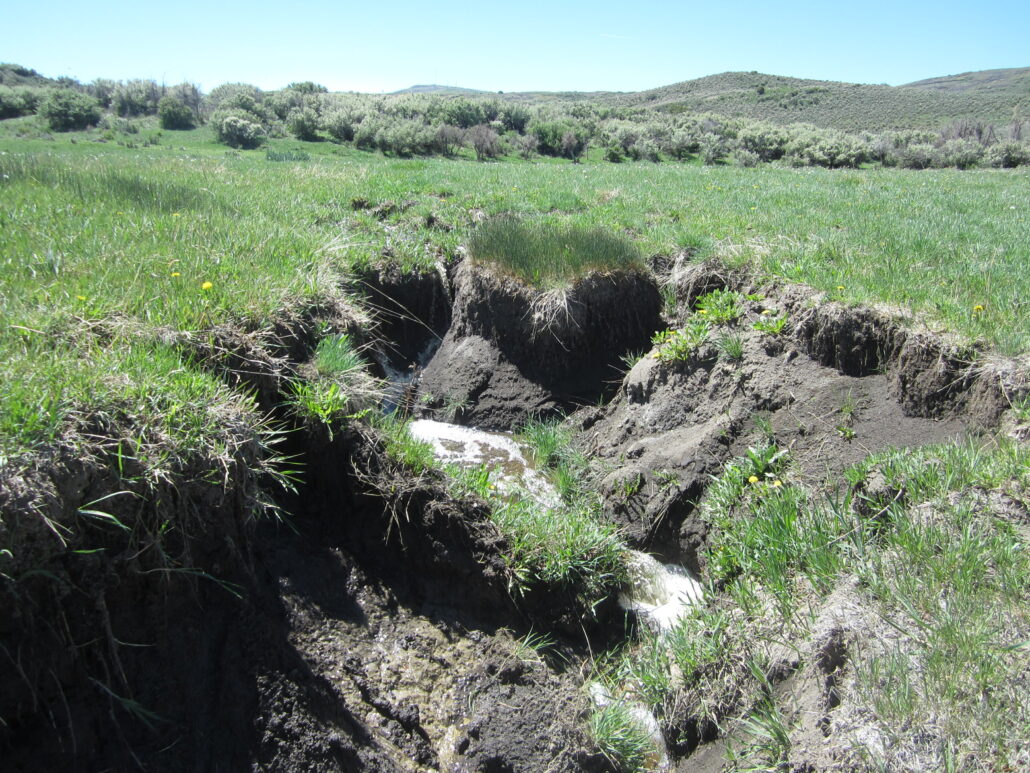
Figure 1. Headcut in Montrose County, Colorado in Gunnison Sage-Grouse habitat. This headcut will slowly move up the valley and threaten the entire wet meadow system. Water spills over the top of the headcut and erodes the soil, exposing roots and causing vegetation to die. Erosion may start due to grazing issues, trails, roads, or other factors, and will eventually dry out a system.
The Stewardship team at Bird Conservancy works with landowners to identify issues, recognize underlying causes, and design solutions to improve land health. Once a plan is made, landowners work together with Bird Conservancy and a variety of other partners to implement projects that benefit both the landowner’s objectives and wildlife habitat.
Restoring Seasonal Wet Meadows to Support Gunnison Sage-Grouse
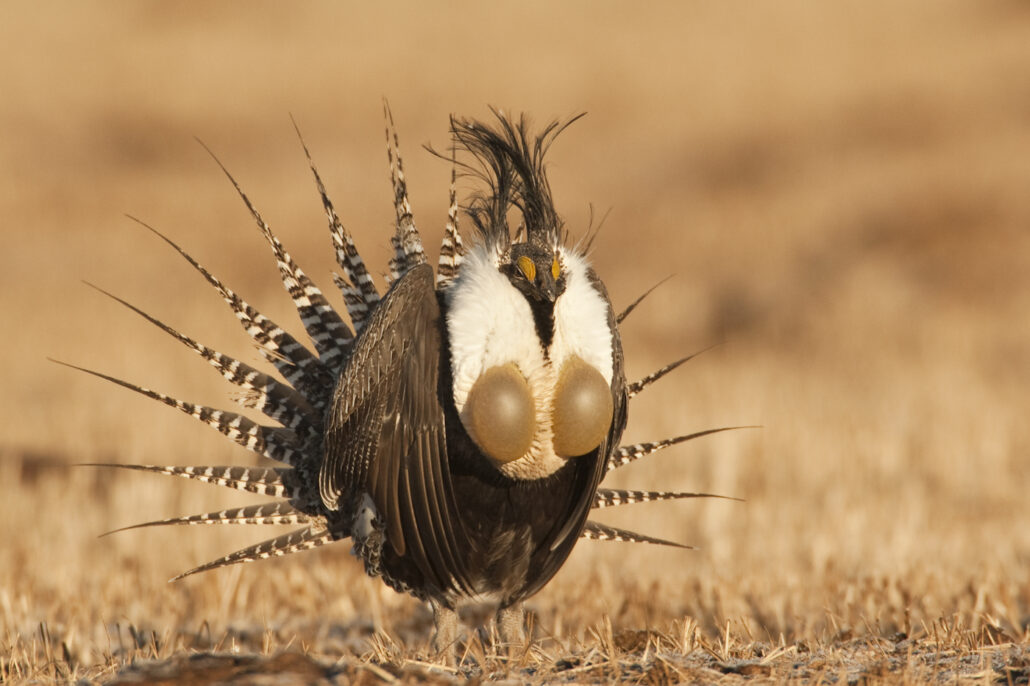
Figure 2. A male Gunnison Sage-Grouse putting on a display early in the morning Mill Creek Ranch in Gunnison, CO. Photo by Noppadol Paothong.
Western Colorado is home to an iconic species of bird, the Gunnison Sage-Grouse (Centrocercus minimus; Figure 2). Gunnison Sage-Grouse are a federally Threatened species with only about 3,500 birds estimated to be on the landscape across southwestern Colorado. Sage-grouse use sagebrush (Artemisia sp.) for food and cover throughout the year, but in summer and fall their diet shifts to include insects and forbs (wildflowers) that are high in protein, which are important for chicks. Mother hens bring broods to wet meadows in late summer and early fall to take advantage of these seasonal resources. Brood rearing habitat has been considered a limiting factor for sage-grouse, as population viability is highly sensitive to female reproductive success and population growth depends on high chick survival (Miller 2004).
Because wet meadows are so important to sage-grouse, land managers have been working to restore these areas since 2012 in the Gunnison Basin and beyond. Simple rock structures can be hand-built to reduce erosion and increase sedimentation (Figure 3), increasing the water table, wetland vegetation, and the insects available to sage-grouse broods. They are cost-effective and provide a great opportunity to volunteers who want to work on habitat restoration (check out Bird Conservancy’s article, “Habitat Restoration Rock Stars” for a great example). Low-tech restoration practices, like rock structures, have been effective in restoring wetland vegetation to drying systems. Monitoring has shown these practices lead to more wetland vegetation (Silverman et al. 2018), higher soil carbon, and higher soil moisture than untreated wet meadows that have experienced similar degradation. These areas have also been shown to retain water longer into fall, even in dry years, demonstrating some resilience to drought conditions. Research is on-going to evaluate sage-grouse use of the meadows, but grouse do bring their broods to these restored areas to raise their chicks.
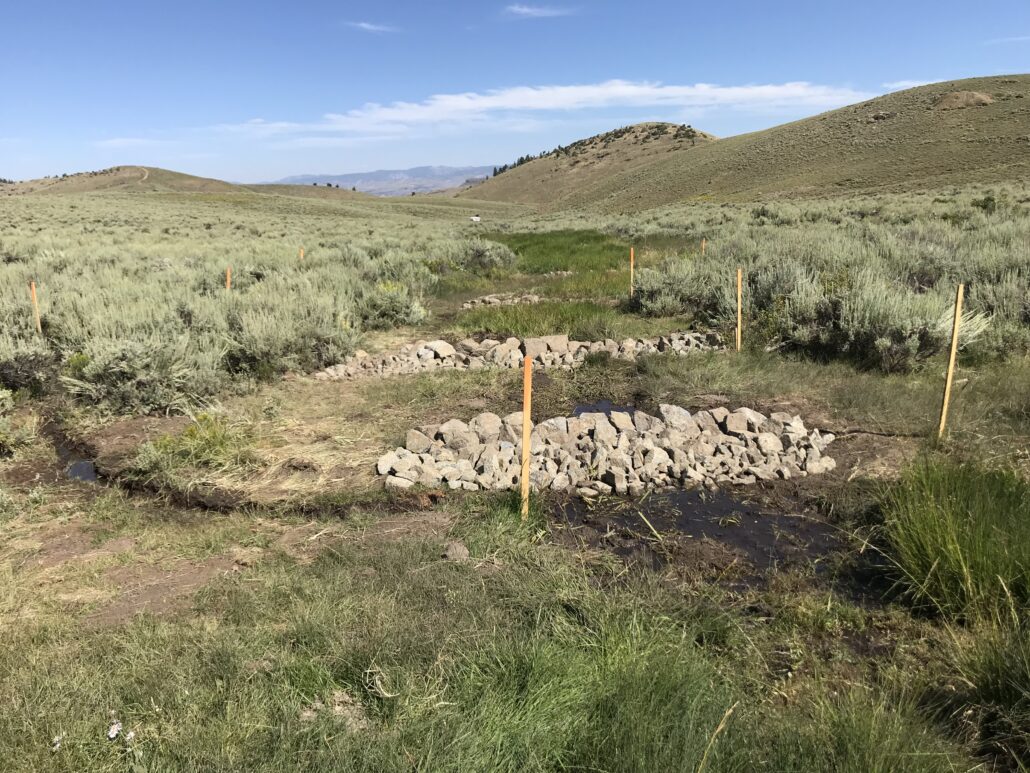
Figure 3. A series of one-rock-dam rock structures in a privately owned wet meadow in Gunnison County, Colorado that supports Gunnison Sage-Grouse brood rearing. The rock structures will reduce erosion from cattle trailing in the meadow, and will help to slowly expand the wet meadow, increase wetland vegetation, and increase insect abundance for sage-grouse chicks. Photo by Dan Olson, USDA Natural Resources Conservation Service.
So with all these benefits, wet meadow restoration seems like a quick and easy way to save sage-grouse, right? Not so fast! When the West was settled, wet meadow areas were favored for homesteading due to the benefits for livestock production, and are therefore largely privately held (Donnelly et al. 2016). This complicates restoration efforts, as it is necessary to get landowners invested in wet meadow restoration. Luckily wet meadow restoration also benefits ranching by increasing water retention, and resulting grass production provides both food for cattle and cover for grouse. In addition, functional wet meadows provide habitat not just for brood-rearing grouse, but also for elk, deer, pronghorn and other species – while also increasing forage production and resilience to livestock grazing. It’s a win-win-win!
Managing Invasive Species in Sage-grouse Habitat: Cheatgrass
Wet meadow restoration isn’t the only strategy land managers and landowners can use to restore water and build resilience in sagebrush ecosystems! Sagebrush ecosystems are known for being dry, but aridification and invasive species have resulted in even drier conditions. Two groups of invasives are partially responsible for sagebrush ecosystems drying: (1) cheatgrass, and (2) low-elevation conifers. Invasive species removal can be an important tool to improve the ecosystem function and build resiliency to drought.
Cheatgrass (Bromus tectorum; downy brome) is an invasive annual grass from Eurasia that outcompetes native plants, especially in disturbed sites. It is a prolific seed producer that can produce almost 14,000 seeds per square meter and 1,300 seedlings per square meter (Smith et al. 2008), which compete with native vegetation for water and other resources. Importantly, cheatgrass also promotes a frequent fire cycle, as it germinates and subsequently dries out earlier than other native species, allowing for large and severe fires to be carried through a dense understory of dry grass stalks. This can convert native rangelands to cheatgrass monocultures (Figure 4), which provide little structure for cover or food and become depauperate of wildlife species. Additionally, cheatgrass competes with native species for water resources, drying out the landscape for deeper-rooted perennial species. Gunnison Sage-Grouse habitat is starting to see an increased spread of cheatgrass, which has been a major cause for concern given the limited extent of existing habitat and the threat of permanent conversion to cheatgrass monocultures.
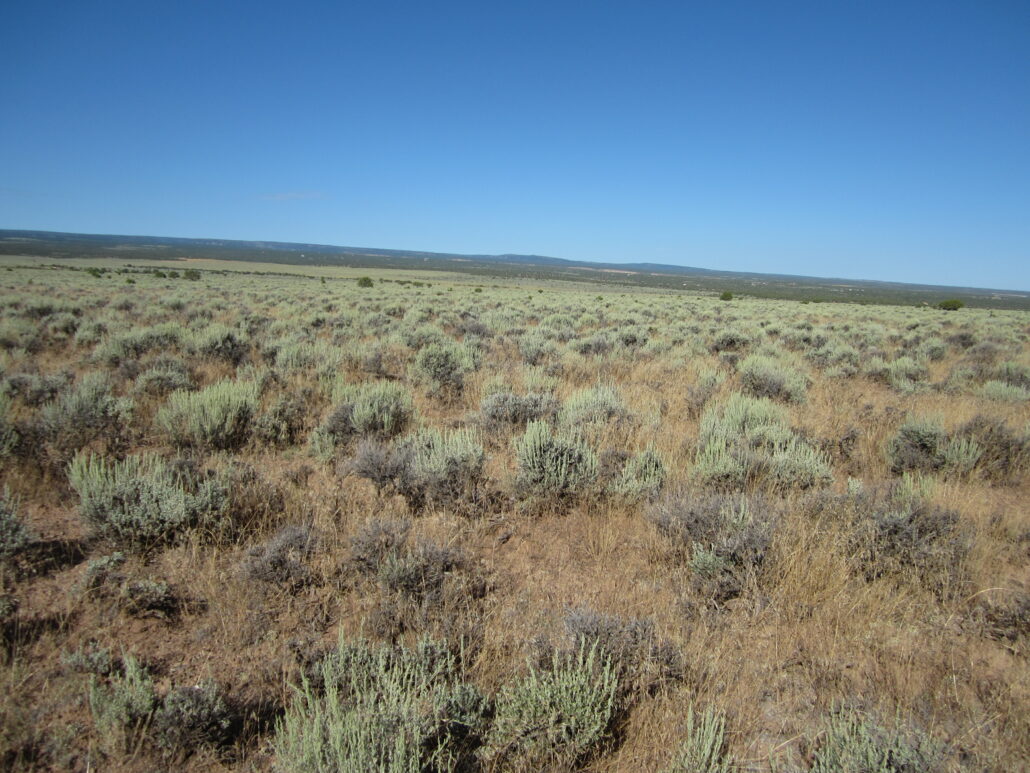
Figure 4. Dried cheatgrass (Bromus tectorum) stalks form a dense understory in this Wyoming Big Sagebrush (Artemisia tridentata wyomingensis) stand in critical habitat for Gunnison Sage-Grouse in Montrose County, Colorado. This stand is vulnerable to wildfire, and restoration efforts are difficult in these arid, low elevation stands.
Monitoring intact habitat and implementing an early response to invasion are critical to maintaining quality wildlife habitat in sagebrush ecosystems. Cheatgrass spread can be limited by washing vehicles, bikes, shoes, socks, pets, and heavy equipment between visits to different sites (for restoration work, hiking, or driving). Minimizing soil disturbance is also important. Careful grazing management, reseeding disturbed areas, and other conservation practices also help to maintain a healthy and resilient ecosystem. Once established, cheatgrass can be hand-pulled before seeds set, or treated with pre-emergent herbicides in late summer or fall to prevent seeds from germinating (Figures 5 and 6).
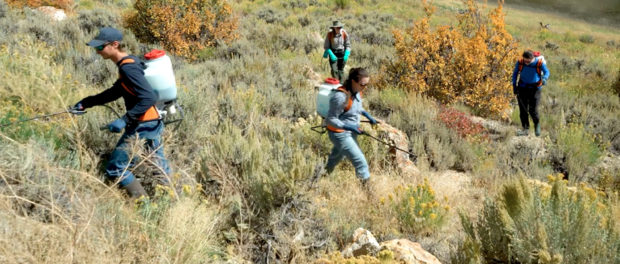
Figure 5. Biologists from Colorado Parks and Wildlife, Bird Conservancy of the Rockies, National Parks Service, and Gunnison Conservation District spray herbicide on cheatgrass at the National Parks Service and Bureau of Land Management boundary in Gunnison County, Colorado as part of the Cheatgrass Strikeforce Day. Photo by Sam Liebl.
Our Stewardship biologists include these mitigation measures in their conservation plans, and we also educate the public about what cheatgrass looks like, why it is important, and how to prevent the spread and treat cheatgrass in their own yards. Each year, biologists participate in the Gunnison Annual Cheatgrass Eradication Day, where Gunnison residents pull cheatgrass from vector locations like the schools, recreation center, and city parks. Additionally, a “Cheatgrass Strikeforce” assembles annually to treat cross-boundary cheatgrass invasions that impact partnership agencies like US Forest Service, Bureau of Land Management, National Parks Service, and Colorado Parks and Wildlife lands (Figure 5). This has catalyzed action across other public and private lands, including some large-scale treatments (Figure 6).
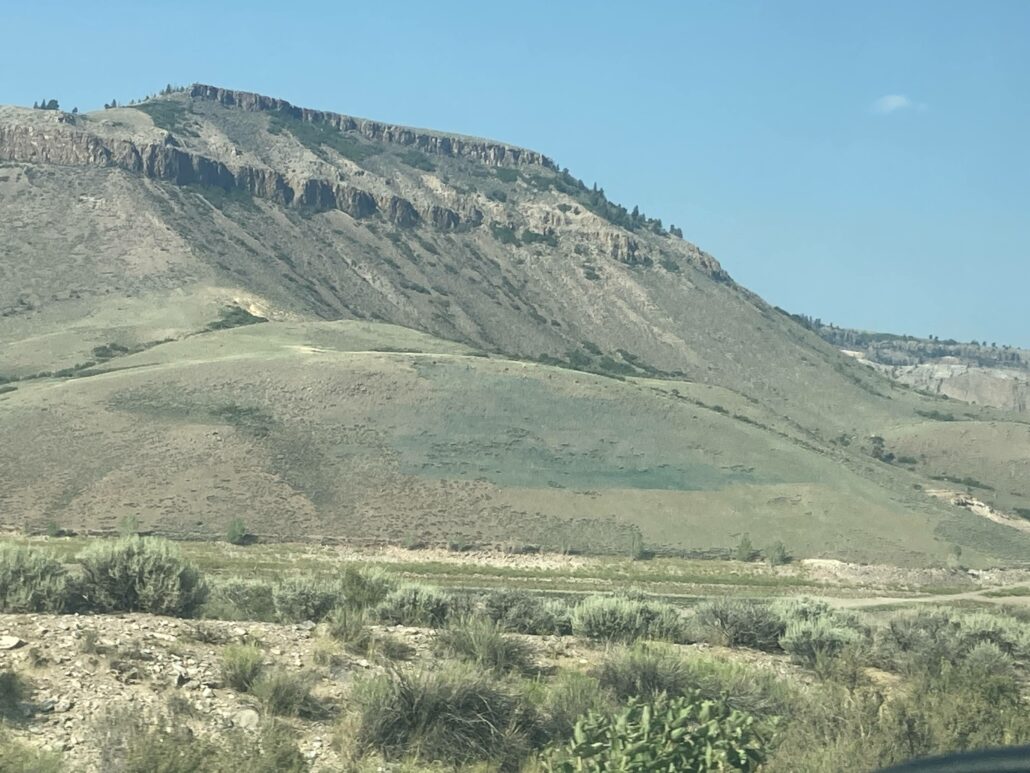
Figure 6. Blue dye is used to mark herbicide treatments for cheatgrass on the Dillon Pinnacles of Gunnison County, Colorado. Dye is faintly visible in the center of the photograph, where a dense cheatgrass infestation has expanded at Curecanti National Recreation Area, likely moving across the sagebrush rangelands from a trail crossing the hillside.
Managing Invasive Species in Sage-grouse Habitat: Conifers
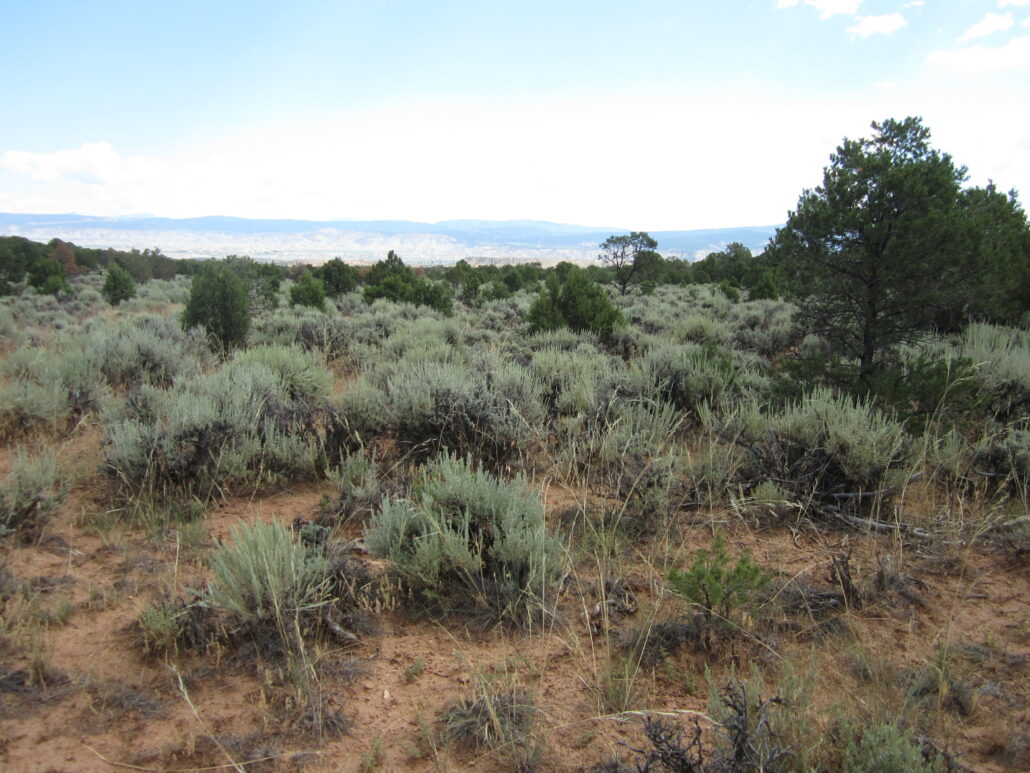
Figure 7. Pinyon and juniper encroachment into sagebrush rangelands in Montrose County, Colorado, in sage-grouse habitat. The understory is reduced and native grasses and forbs lack vigor, possibly due to competition for water resources.
Conifers such as pinyon pine (Pinus edulis) and juniper (Juniperus sp.) can also invade sagebrush ecosystems, and this encroachment is widespread across the Western United States (Figure 7). Pinyon and juniper encroachment negatively impacts sage-grouse survival and demographic traits (Coates et al. 2017 and citations therein) because trees are excellent predator perches in a landscape historically lacking tall structures from which avian predators can hunt. These trees also alter the water cycling substantially, as they can use up to 30 gallons of water per tree per day if sufficient water is available (Deboodt et al. 2008). As few as 9 trees per acre can use all the annual precipitation in the area! Furthermore, snowfall is trapped on tree branches and is converted from solid snow straight to water vapor, rather than melting and soaking into the soils, limiting the water infiltration and resulting in widespread aridification of sagebrush rangelands (Figure 8). Sagebrush landscapes without conifers capture more snow than those with conifers (and also more than grasslands without sagebrush), and allow for water to soak in more slowly as it melts, which helps combat drought impacts (Komos et al. 2017). Sagebrush presence can actually increase the grass production and vigor on the landscape because of this snow drift effect, as well as the ability of deep sagebrush roots to pull water to the surface through percolation, making water more available to grasses.
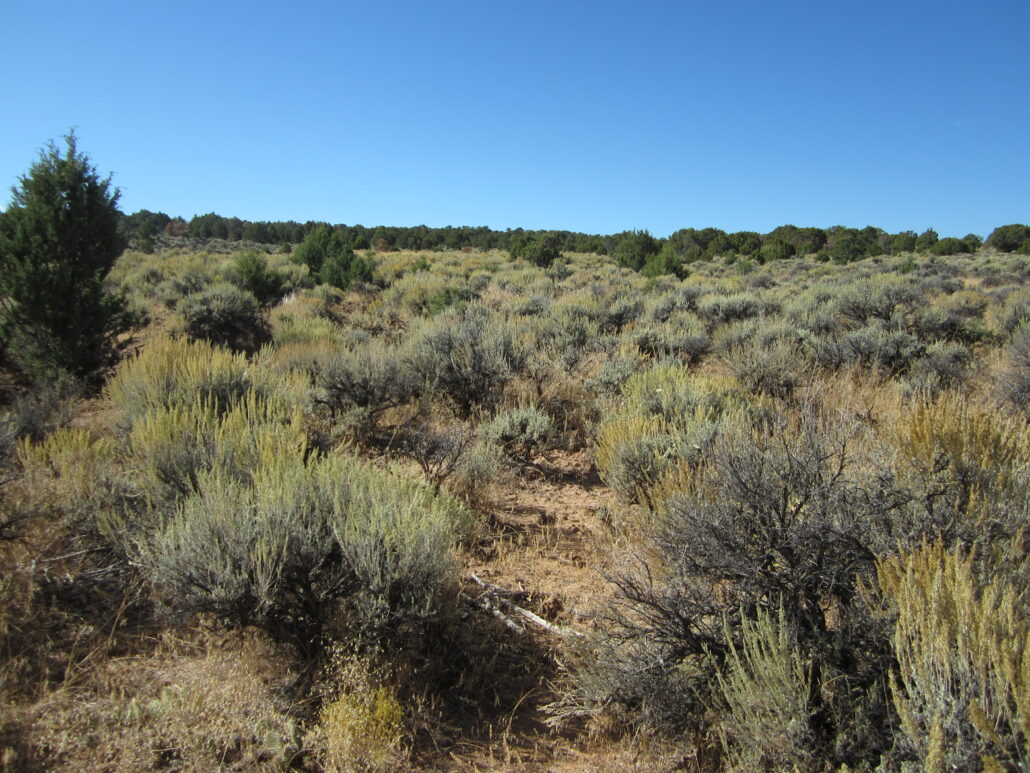
Figure 8. A depauperate understory in sagebrush rangelands downstream from extensive pinyon and juniper encroachment in Montrose County, Colorado. Upstream trees have reduced water infiltration and water availability, resulting in reduced cover and food for sage-grouse.
Conifer expansion is relatively easy to counteract – all you have to do is remove the trees! Conifer removal is best performed on landscape scales and in areas that are not heavily invaded (Figures 9 & 10). The more intact an ecosystem is, the more resilient it will be and the easier it will be for a landscape to “bounce back” to its native composition. Areas that have been heavily degraded may require extra management to improve species composition through additional weed treatments, seeding, or other management practices. Maintaining high species diversity and high cover of native plants will help promote resilience in the face of disturbances. Therefore, grazing management and other tactics may be used to improve resilience on the landscape concurrent with invasive species management.
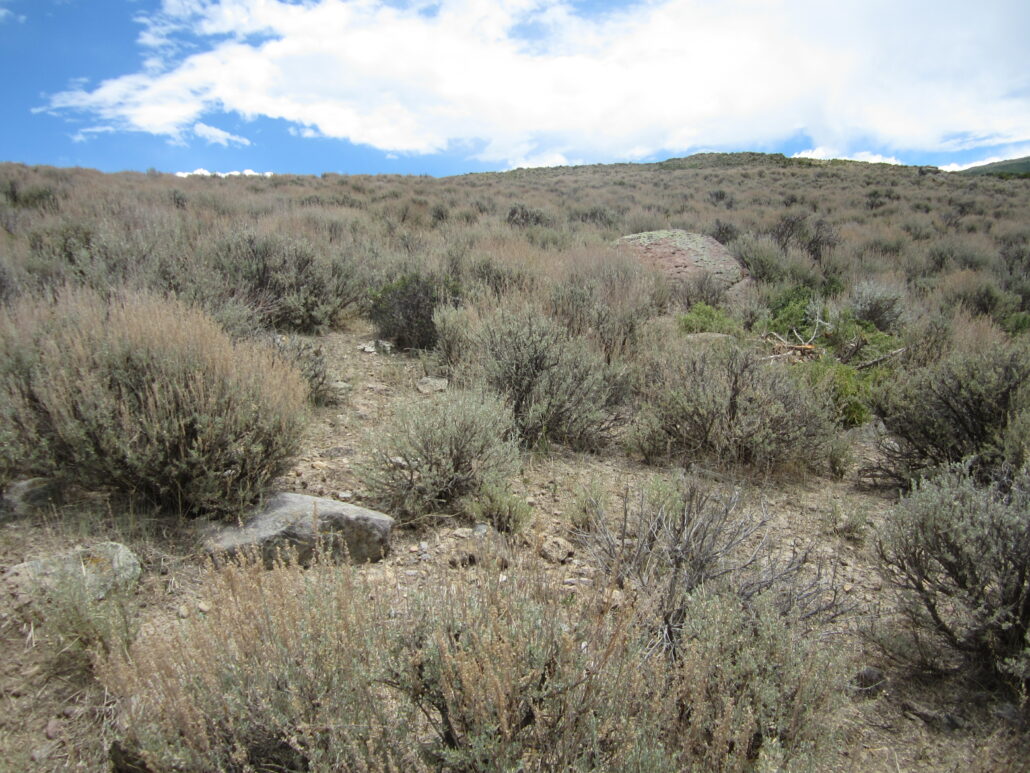
Figure 9. A restored sagebrush ecosystem after chainsaw crews have cut mature pinyon and juniper trees down. Predator perches have been removed, and hydrologic cycles will slowly be restored. Photo from a private lands restoration project in Montrose County, Colorado.
Conifer removal projects have been shown to increase groundwater by an average of 41 days and can double in-stream flows in late summer (Deboodt et al. 2008). This increased water availability and infiltration has the potential to improve native shrub, grass, and wildflower survival and reproductive capabilities. Healthier, more vigorous shrubs, grasses, and wildflowers benefit sage-grouse by providing nutritious foods for broods and nesting hens (Bates et al. 2017), but also create excellent hiding cover. These projects have major impacts on drought resilience and can increase sage-grouse populations by up to 12% post-restoration (Olsen 2019), making conifer removal a valuable tool for habitat restoration.
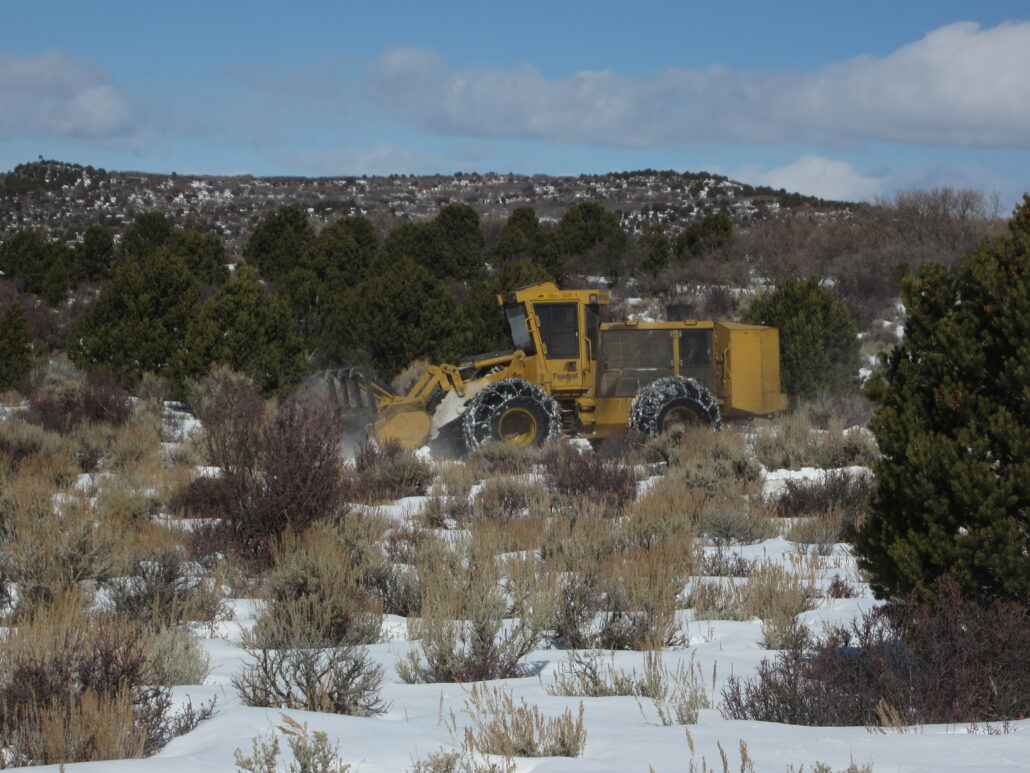
Figure 10. Heavy equipment, like this Tiger Cat mulcher with a Fecon head, can mulch grown pinyon and juniper trees where they stand. Mulching can also help with seed germination of native species and reduce wildfire risk by reducing tree material to mulch.
Bird Conservancy’s Stewardship team has helped to restore thousands of acres of sagebrush habitat that have experienced conifer expansion in recent decades. Biologists work with private landowners to identify areas where conifers have encroached into sagebrush habitats, apply for and secure funding for treatments, coordinate with contractors, and remove trees. Encroachment can be identified using satellite imagery, landowners’ knowledge of the landscape, and hands-on field assessments. Many of our projects have targeted sage-grouse habitat, successfully removing predator perches and improving water retention on the landscape (Figure 11).
- Figure 11. A sagebrush landscape on private lands in Montrose County, Colorado with conifer encroachment since the 1960s, before treatment.
- The same landscape after treatment. Conifers were mulched and hand-cut, restoring the native plant structure and composition.
Tools and Resource for Continued Habitat Restoration
With landscape-scale treatments occurring across public and private lands, we may be able to increase ecosystem resilience and provide water later into the season for both plants and wildlife, possibly reducing the severity of negative impacts of drought on populations of sensitive species in the future. Landowners can find a variety of tools (see Colorado State University – Extension’s drought planning website) and resources (see the guide, Managing Drought Risk on the Ranch) to help plan for droughts, including both informational resources and financial resources – the best time to take action is before the next year of drought!
Marcella Tarantino (based in Gunnison, CO) is employed by Bird Conservancy of the Rockies with funding support from the USDA Natural Resources Conservation Service and the National Fish and Wildlife Foundation. All photos were taken by Marcella unless otherwise noted.


